Characteristics of Nicaraguan Coffee beans is Nicaraguan Coffee good? Nicaraguan Coffee hand-brewing characteristics
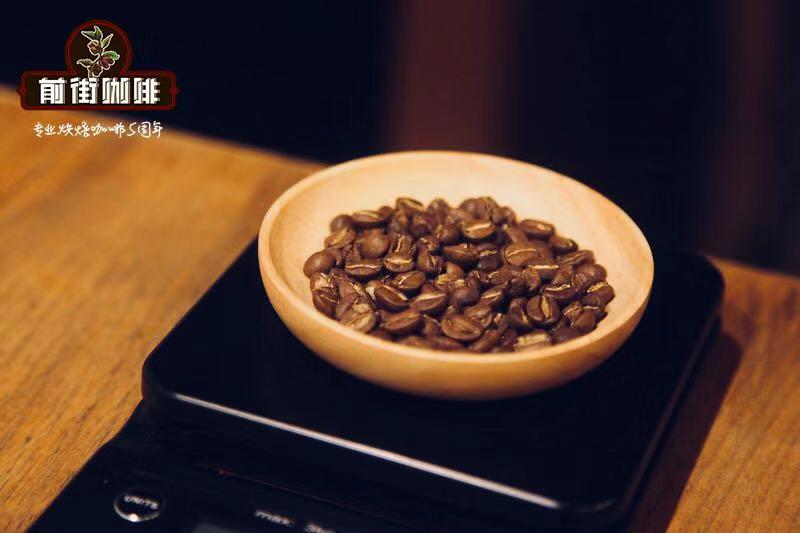
Qianjie said before that Honduras is a coffee producer and an unpopular country for people outside the industry. And some coffee countries do not say unpopular, you may have heard the name of this country, but you may not be able to say it, let alone know that this country is also a coffee producer, this country is Nicaragua.
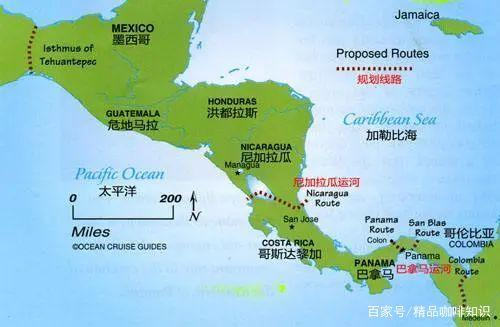
Nicaragua is located in central Central America, bordered by the Pacific Ocean to the west and the Caribbean Sea to the east. The highlands in the north and the coastal plains in the east are part of the Central American volcanic belt. The eastern plain is high-temperature and rainy, with a tropical maritime climate. The suitable climate provides an excellent growth environment for the cultivation of coffee. Nicaraguan coffee has excellent quality and taste, and it is also among the top coffee beans in the world and enjoys a good reputation. In terms of flavor characteristics, Nicaraguan coffee has moderate acidity, mild taste and delicious aroma.
Nicaraguan coffee beans have a wide range of flavor properties. Some coffee has a high alcohol thickness like Mexican coffee, while others have bright acidity like African coffee. Most of the varieties used in Nicaraguan coffee are traditional Tibica, and a few varieties of bourbon and Kaddura are grown.
High-quality Nicaraguan coffee beans grown in the north and middle of the country. Coffee is a pillar industry in Nicaragua, producing nearly 100,000 tons of coffee beans every year. Many people who have tasted Nicaraguan coffee usually think that it is no different from Salvadoran coffee or Honduran coffee. It is full-bodied, smooth and delicate, with a slightly bitter finish, like a faint taste in a wine.
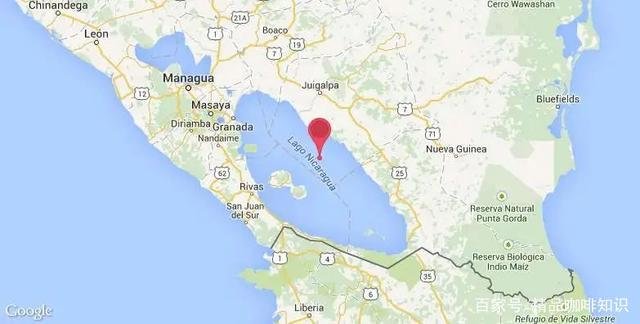
The harvest time in Nicaragua is from October to December. The treatment methods used vary from farm to farm, some using African tanning beds, others using natural sun treatment or traditional water washing, and then drying in the yard. Planted with volcanic ash and shaded trees, it can produce high-quality Nicaraguan coffee with a soft flavor, slightly sour and good alcohol thickness.
Nicaragua is the largest of all coffee beans, among which the Maragogipe giant bean produced in the Madagelba region is the most characteristic variety of iron bika (Arabica native bean); its tree, leaves and fruit are much larger than the average Arabica. It is called a giant elephant bean because it is 2-3 times the size of ordinary coffee beans.
Nicaragua is mainly divided into four major producing areas, namely, the New Bosnia and Herzegovina Sub-region (Nueva Segovia), the Madagelba / Henodeka region (Matagalpa/Jinotega), the Borgo region (Boaco) and the Pacific Coast region (Pacific). The highest planting height in Bosnia and Herzegovina is about 1500mur2000, and the coffee produced is the highest SHG (StrictlyHighGro).

Nicaraguan coffee beans are graded according to planting altitude
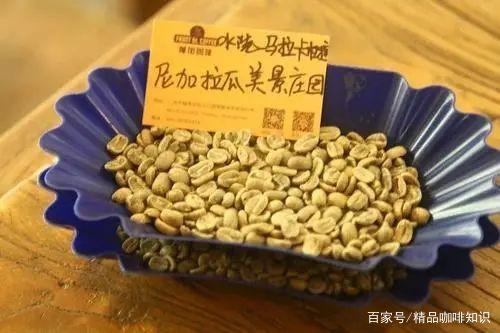
Take [Qianjie Coffee Fairview Manor Coffee beans] as an example
Producing area: Nicaragua
Manor: Fairview Manor
Variety: Malakadura
Treatment: washing
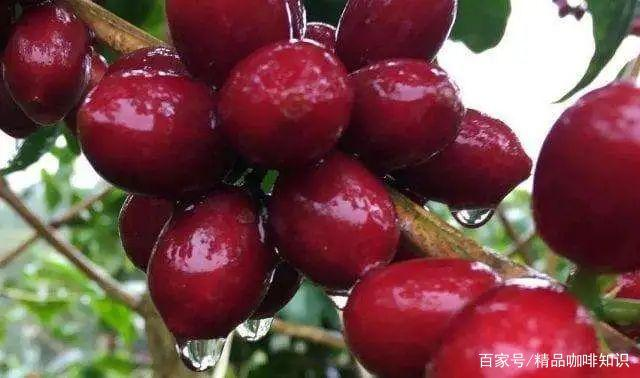
[what breed is Malakadura]
Maraka Dula (Maracaturra): is a hybrid variety, such as Maragogype and Kaddura (Caturra) mixed crystallization, the flavor of both the former full body shape and the latter sweet flavor, common in Nicaragua.
[Qianjie Coffee Baking Analysis]
The Qianjie roaster thinks that the granule of this coffee is relatively large and dense, so it lengthens the dehydration process, absorbs heat slowly in the baking process, and the Mena reaction process is also slow, turning yellow point in 6 minutes. In the first batch of baking, the Qianjie roaster has a relatively high bean temperature, 200 degrees into the bean, and the firepower is also relatively large, gradually increasing the firepower according to the need in the baking process. Under this method of operation, the dehydration time of coffee is relatively prolonged, with a heating rate of 6-8 degrees every 30 seconds.
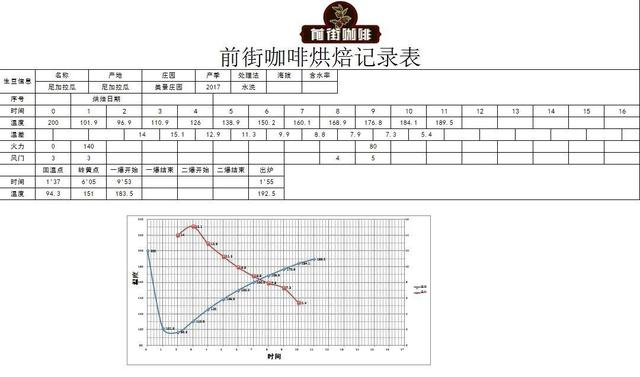
[Qianjie Coffee Baking suggestion]
Roaster Yangjia 600g semi-direct fire
The furnace temperature is 200 degrees Celsius, the fire power is 140 degrees after the throttle is opened at 3: 00, the throttle remains unchanged, the return point is 1: 37 ", keep the firepower, at this time the bean table turns yellow, the smell of grass disappears completely, the dehydration is completed, the firepower remains unchanged, and the throttle is adjusted to 4.
6 '05cm' dehydration, 9: 33 "beans appear ugly wrinkles and black markings on the bean surface, the smell of toast obviously changes to the smell of coffee, which can be defined as a prelude to an explosion. At this time, listen carefully to the sound of an explosion, to 9: 53" start an explosion, adjust the firepower to 80 degrees, the throttle should be fully opened 5 (adjust the firepower to be very careful, not to be so small as to be free of bursting sound), develop 1cm 55 "after an explosion, heat the pot at 192.5 degrees.
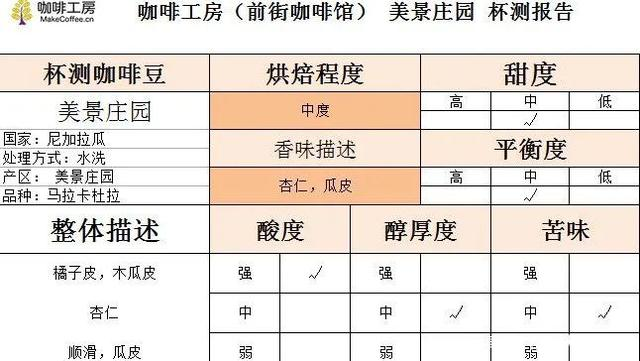
[coffee cup test report on Qianjie]
[Qianjie coffee brewing parameters]
Filter cup: V60
Powder / water ratio: 1:15
Temperature: 90 degrees
Degree of grinding: BG#5M

[Qianjie coffee brewing technique]
First steam 30 grams of water for 30 seconds, after the end of steaming, circle water injection to 125 grams, wait for the water level to drop by half, and then continue to inject water to 225 grams.
[flavor description]
It will have the flavor of citrus, orange peel, caramel and almond when brewing with 90 degree water in V60 filter cup.
Important Notice :
前街咖啡 FrontStreet Coffee has moved to new addredd:
FrontStreet Coffee Address: 315,Donghua East Road,GuangZhou
Tel:020 38364473
- Prev
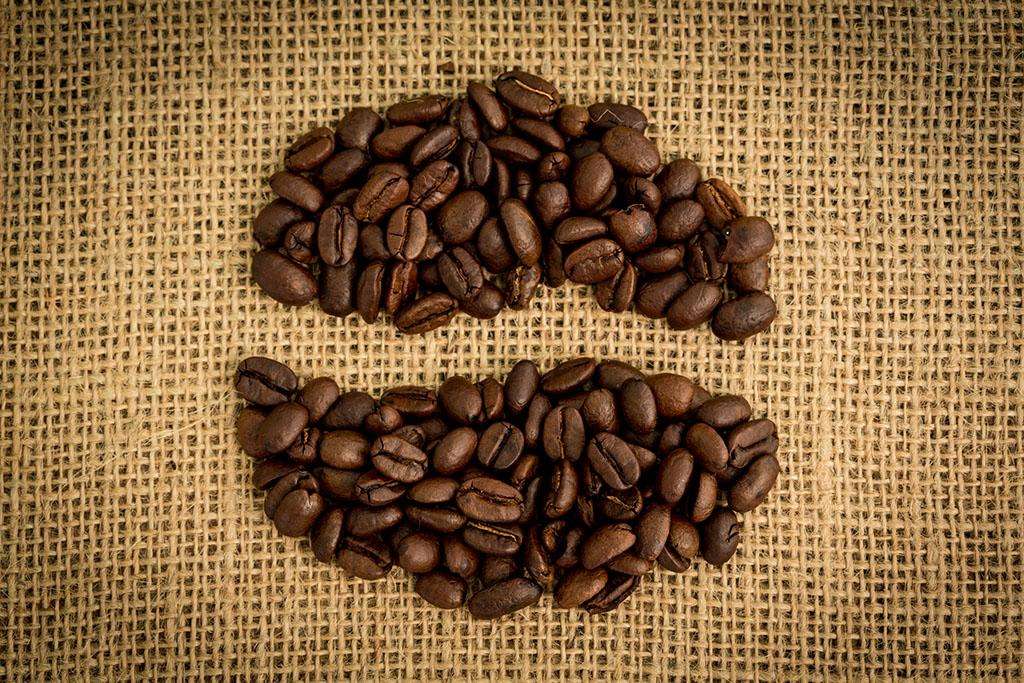
Does Salvadoran coffee taste good? Salvadoran coffee beans taste
Following Cafe Review (official Wechat account vdailycom) found that Beautiful Caf é opened a small shop of Salvadoran coffee flavor: balanced taste and excellent texture suggest roasting method: medium to deep, there are many uses of quality beans: Salvadoran SHB taste characteristics: sour, bitter, sweet mild and moderate. Salvadoran coffee is juxtaposed with Mexico and Guatemala as Asa and wheat
- Next
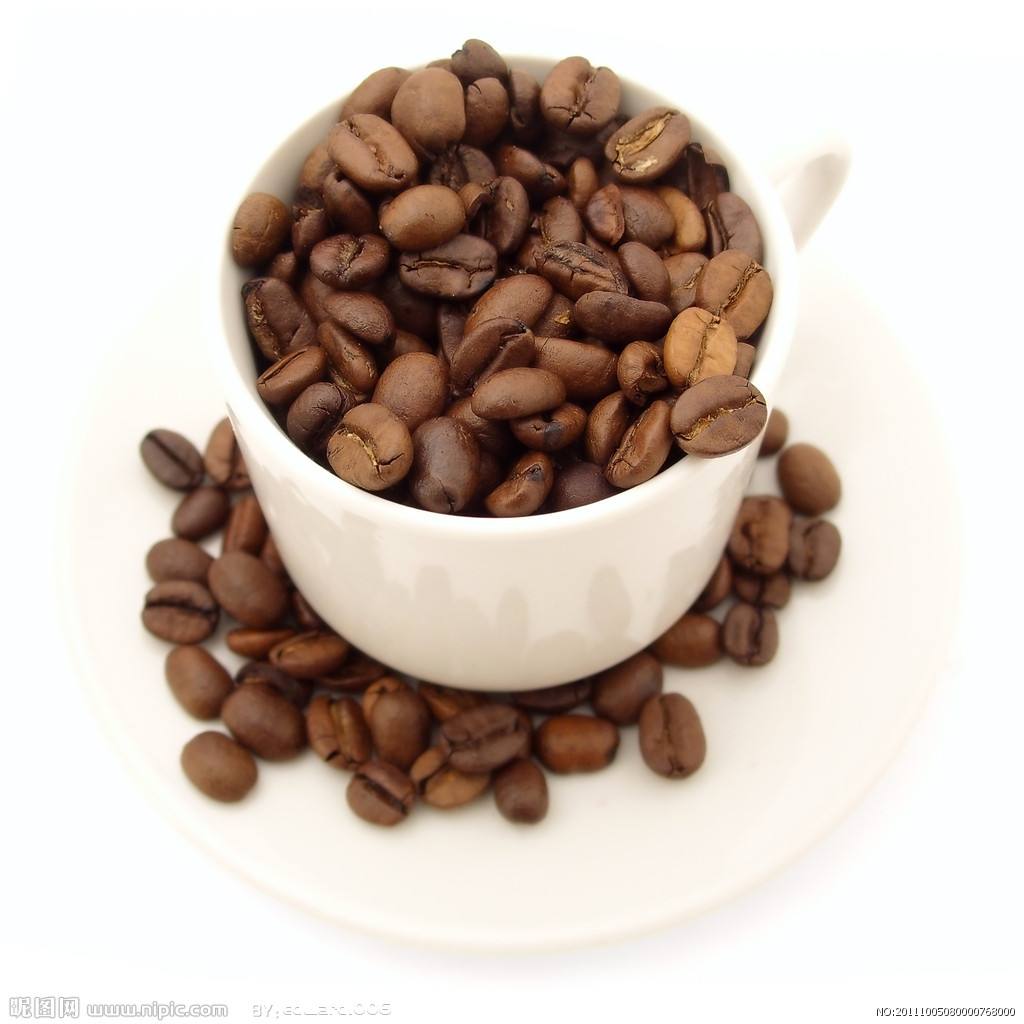
Nicaragua Coffee Features, Flavors of Nicaragua Coffee
Pay attention to coffee reviews (Weixin Official Accounts vdailycom ) and find a good cafe to open its own small shop, high-quality Nicaragua coffee, grown in the north and central part of the country. Coffee is Nicaragua's pillar industry, producing nearly a hundred thousand tons of coffee beans every year. Many people who have tasted Nicaragua coffee usually think that it is no different from Salvadoran coffee or Honduran coffee.
Related
- Detailed explanation of Jadeite planting Land in Panamanian Jadeite Manor introduction to the grading system of Jadeite competitive bidding, Red bid, Green bid and Rose Summer
- Story of Coffee planting in Brenka region of Costa Rica Stonehenge Manor anaerobic heavy honey treatment of flavor mouth
- What's on the barrel of Blue Mountain Coffee beans?
- Can American coffee also pull flowers? How to use hot American style to pull out a good-looking pattern?
- Can you make a cold extract with coffee beans? What is the right proportion for cold-extracted coffee formula?
- Indonesian PWN Gold Mandrine Coffee Origin Features Flavor How to Chong? Mandolin coffee is American.
- A brief introduction to the flavor characteristics of Brazilian yellow bourbon coffee beans
- What is the effect of different water quality on the flavor of cold-extracted coffee? What kind of water is best for brewing coffee?
- Why do you think of Rose Summer whenever you mention Panamanian coffee?
- Introduction to the characteristics of authentic blue mountain coffee bean producing areas? What is the CIB Coffee Authority in Jamaica?

